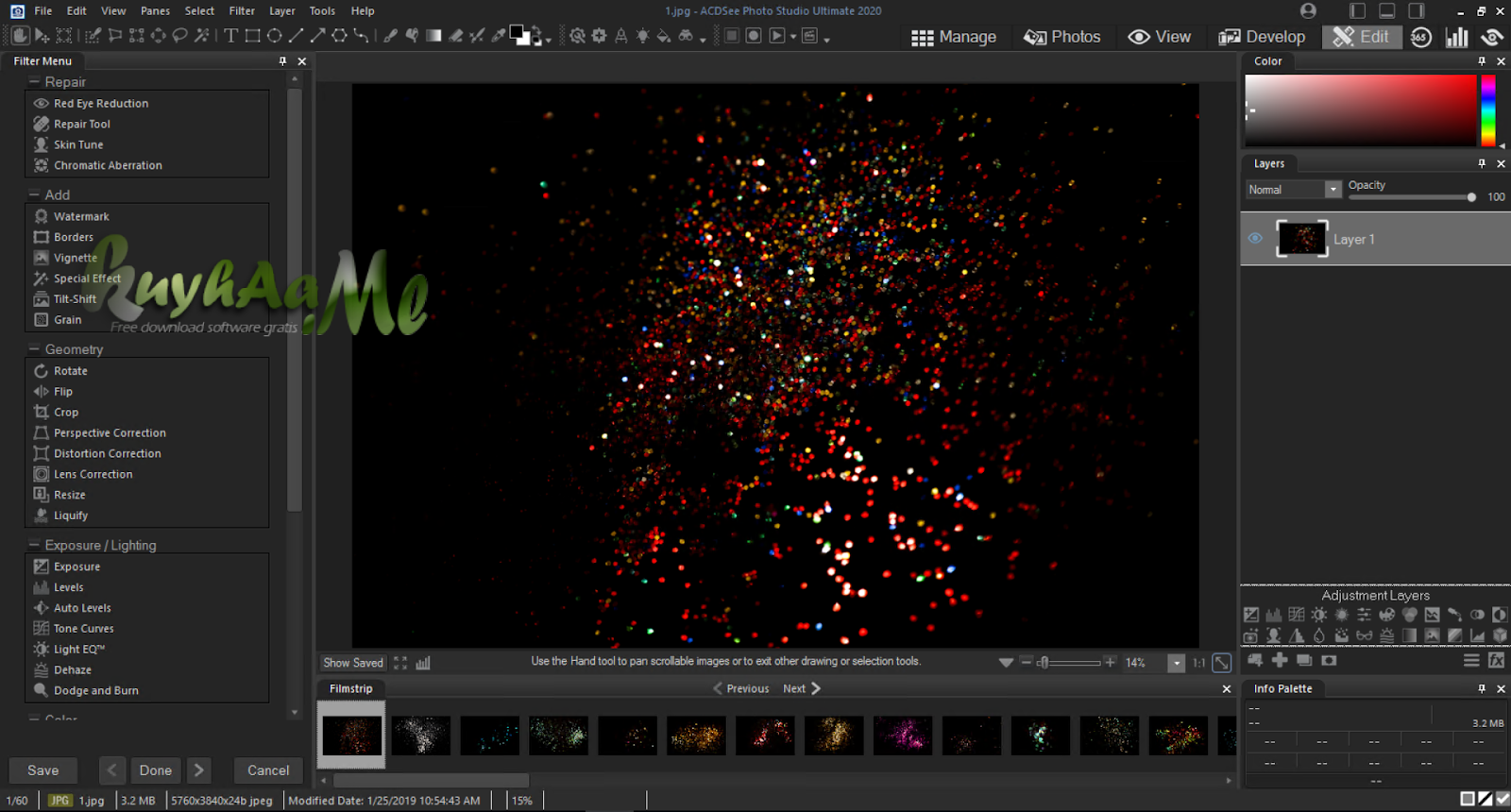
If you are unsure what that is, Fstoppers has a raft of explanations and tutorials. The White Balance adjustment tool works very well. Again, it should be used gently as, like clarity, being heavy-handed can leave unpleasant artifacts on your photo. If you have an image and you want to cut through haze or fog, then this is the tool for you. Saying that, ACDSee's adjustments are gentler and more precise than many of its competitors, so if you have used clarity in, say, Lightroom, you can push this slider further and still get acceptable results.ĭehaze does what the title says. Vibrance works similarly, but only on the more muted colors.Ĭlarity is a tool that adds mid-tone contrast, giving the image extra punch. Push it all the way to the right, and the colors become too saturated. Try pulling the saturation slider to the left the color disappears. Meanwhile, fill light increases the brightness of the shadows, and contrast makes the dark areas darker and the lighter areas lighter. The amount you adjust the image is down to your taste.Įxposure changes the overall brightness of an image, whereas the highlights slider reduces the luminance of the brighter areas. Depending upon the amount of processing you want, sometimes, just using the adjustments found in the General drop-down panel is sufficient. Switching to the Tune tab allows you to make tonal and color adjustments to the image. Here, you can apply a lens and camera profile and correct any unwanted tilt when you took the photo. On the left side panel, there is a tab called Geometry. In the Develop Mode, I advise cropping and leveling a photo to perfect your composition first. The boundaries between these two areas are blurred, but it's a good way of approaching them. Editing is where we change individual pixels in an image, such as removing red eyes from a flash photo, cloning out an unwanted distraction, adding vignettes, etc. In other words, they are non-destructive. It's worth thinking of developing as applying global adjustments to the entire image that can be changed or reset at any time.

There is a difference between developing and editing a photo. The Develop and Edit Modes go hand in hand.

#ACDSEE PHOTO STUDIO ULTIMATE 2020 REVIEW HOW TO#
How to Develop and Edit Your Photos in ACDSee Photo Studio Ultimate 2023 That opens the image in the View module, making the image larger and thus easier to see and decide whether it's worth keeping. To sort your photographs, double-click on the first photo in the sequence. Now, when you rate a picture with a number rating or a color code, the program will automatically move on to the next photo without pressing another key. Opening the General sub-menu (the top item) allows you to enable Auto Advance. I do this by applying a number rating to pictures.įirst, go to Tools and then Options. This is an excellent point to sort the photos into those to keep and the ones being consigned to the bin. Below that, you can see the camera settings and the histogram. The folder panel on the left allows you to select individual folders for editing. The Manage module is a super-fast browser that helps you to find and sort your photos. Sorting Photos Using Manage, Media, and View Modes That import process is lightning fast, and you'll soon have a grid of your imported images on the screen. Now, you are ready to click the Import button.

A small Save icon is at the end of the Choose Import row. Once you have set up your import parameters, before importing, it is worth saving your import settings for future use.

If, like me, your catalog runs into tens of thousands of photos shot over many years, this is invaluable. The Customize button here is worth mentioning because there is the option of adding keywords, which will save you a lot of time later. There's the option of renaming the photos as you import them. Once the source has been selected, you can then choose the photos you want to import.


 0 kommentar(er)
0 kommentar(er)
